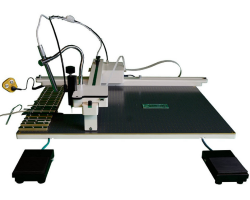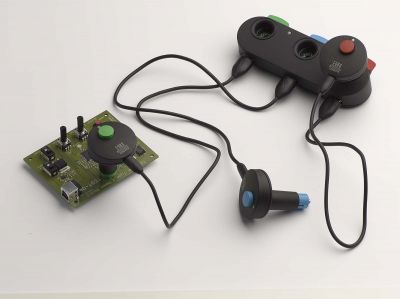The difference between Production and Prototype quality and how to bridge the gap?

Historically electronic designs have a clear evolution. A design is made and created on breadboard to check functionality and then a board layout is created and put to production.
We have obviously made light year leaps since those days of single and 2 layer boards and now 4 and 6 layer boards are the norm with greater and greater density and smaller and smaller components being used to constantly stay competitive in this micro world.
Once the design is proven and goes to mass production then hundreds of thousands of these circuits can be produced at high speed and precise accuracy, which is perfect.
But… when you want to prove your concept and design before mass production, what then? This first stage of designing and manufacturing these concept prototypes, who will build your boards? Most production companies cannot offer cost effective solutions for producing 1 -10 prototypes. The work alone to break down and setup for a quantity of 1 or 1000 is the same and very labour intensive.
The solution is to build up your prototype in-house, in your lab where build up is cost effective and timely and if design changes should be required, they can be made “on the fly”.
This seems logical, but we still have the problem of the size of the components and the density of the board layout being prohibitive for manual assembly. In the past, accurate and controlled equipment has been reserved for EMS/OEM companies with expensive solder paste printers, costly paste stencils, automatic Pick and Place machines, chip shooters, reflow ovens, etc…
So how do you manufacture your prototypes without the space or budget for this large production equipment and the skills to setup all these different machines? This is where a huge gap appears keeping the designer in the dark ages limiting construction to the basic tools like a soldering iron, magnifying glass and tweezers.
But there is hope for these engineering superheroes! Eurocircuits noticed that nobody considered the difficulties faced by engineers and specifically designed and developed equipment to allow prototype designers manufacture to high end specification of accuracy and quality of production equipment.
Desktop solder paste printer (eC-stencil-mate) offering a small machine footprint, a high accuracy and a simple set-up – no more need for expensive paste stencils:
Manual pick and place machine (eC-placer) providing high accuracy placement of small SMD and fine pitch components – no more eye strain, employing camera assisted placement.
Benchtop reflow oven (eC-reflow-mate) with precise temperature profile control and surface temperature monitoring – ensuring that components are no longer destroyed with thermal shock.
eC-test-mate is a handheld test system for functional testing of assembled PCBs without the need for complex tooling. Simply integrate eC-test-mate footprints into your PCB-layout, write your test programs, place the eC-test-mate test head(s) on your board and run the tests. No connectors, no test jigs, just easy footprints. eC-test-mate is a cost-effective solution for testing small series of assembled PCBs.
is a handheld test system for functional testing of assembled PCBs without the need for complex tooling. Simply integrate eC-test-mate footprints into your PCB-layout, write your test programs, place the eC-test-mate test head(s) on your board and run the tests. No connectors, no test jigs, just easy footprints. eC-test-mate is a cost-effective solution for testing small series of assembled PCBs.


